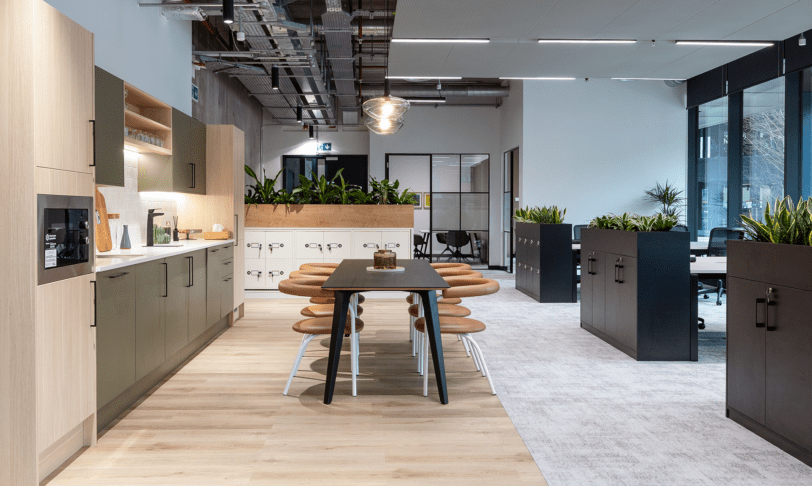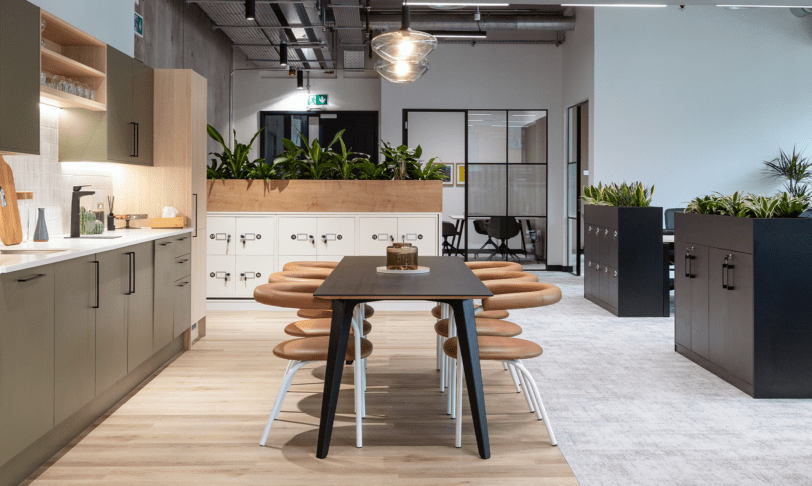What are the benefits of wellbeing in the workplace?
We investigate what constitutes workplace wellbeing, and how the office environment can impact its occupants in such a fundamental way.

What is wellbeing?
Wellbeing is a state of being happy, healthy and prosperous. It refers to the overall satisfaction within your life and is affected by a multitude of factors. These can include physical health, mental and emotional health, relationships, and personal fulfilment. Wellbeing is often thought of as an ongoing process, rather than a static state, as it can fluctuate depending on various circumstances.
Mental and physical wellbeing
Physical and mental wellbeing are very closely interconnected and oftentimes, an extremity in one will influence the other. Mental wellbeing is concerned with how a person is feeling and thinking, and whether they can cope with the normal stresses of life, work productively, and contribute to their community. Physical wellbeing, on the other hand, is in reference to an individual’s health. Physical wellbeing can be improved by maintaining good health and preventing illness and injury, and partaking in healthy habits such as adequate sleep, exercising and a balanced diet.
Social wellbeing
In a social sense, wellbeing is influenced by the relationships a person has, as well as their level of social support and engagement. A strong sense of belonging is an indicator of good social wellbeing. This can be negatively impacted by various factors such as isolation, discrimination and lack of access to resources and opportunities.
Financial wellbeing
Financial wellbeing is an extremely important consideration and is primarily determined through control and autonomy. Despite this, it is often overlooked. People must be able to make financial decisions that align with their values and priorities, so they have the stability to manage financial challenges.
Wellbeing and personal growth
Personal growth and wellbeing often go hand in hand. Good wellbeing can support personal growth, equipping an individual with the necessary resources and confidence to learn, develop and flourish. In turn, personal growth can contribute to good wellbeing by providing a sense of accomplishment. It can also lead to new opportunities and relationships which in turn often improve general wellbeing.
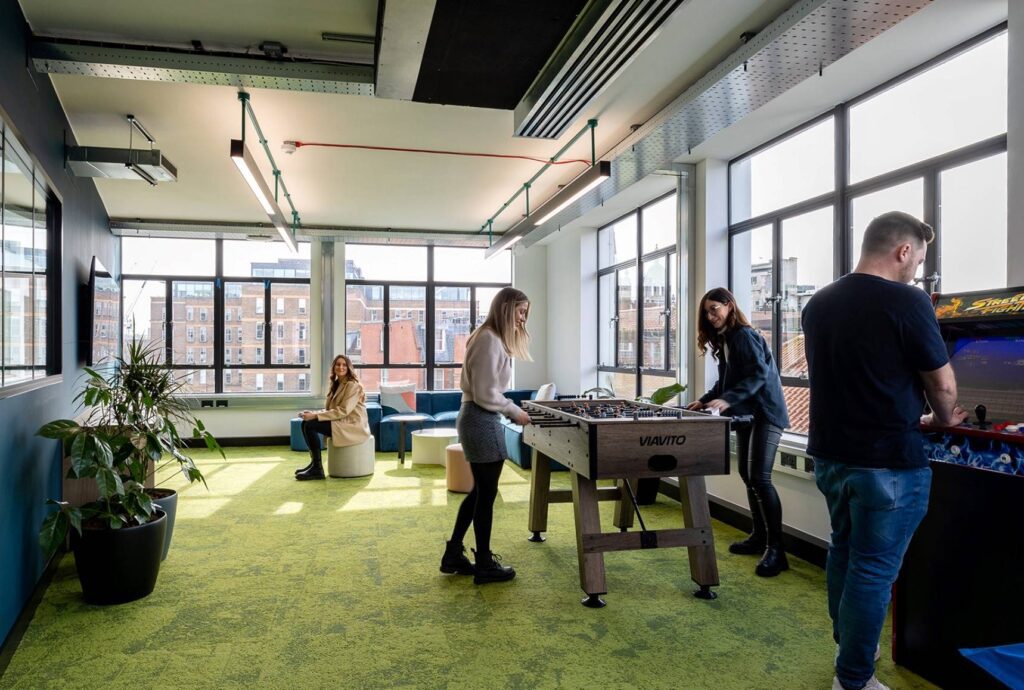
How has wellbeing become a priority in the workplace?
Recent events have impacted many people’s relationships with workplace wellbeing. For example, the COVID-19 pandemic was associated with such stress and anxiety that many people had to prioritise their mental and physical health. This included taking regular breaks, setting boundaries between work and personal life, and engaging in activities that promote mindfulness.
A secondary consequence of the pandemic is what has now been dubbed ‘The Great Resignation’. This is the trend of people choosing to quit or change their jobs to take control of their careers. More and more, individuals now prioritise their wellbeing over work, and wellbeing incentives can be the deciding factor when seeking new work.
It goes without saying that nobody wants to see anyone suffering mentally. Employers have a duty of care for their staff, so it is crucial that they equip the workplace to support wellbeing. Poor mental health costs UK employers a staggering £30 billion each year through lost production, recruitment costs and absence, according to the Advisory, Conciliation and Arbitration Service (ACAS). It follows that helping to ensure workers are comfortable, happy and healthy is good for business. For example, we now know that stress, burnout and other factors have a detrimental effect on productivity, so if employers want an engaged and passionate workforce, wellbeing must be supported.
Wellbeing in hybrid work environments
An increasingly popular working setup, hybrid work involves employees spending some days working in the office and others working from home. Employees often feel a better sense of work-life balance and flexibility when working within a hybrid model. For example, employees who have caregiving responsibilities may find it easier to manage their workload when working from home.
Whilst working from home has its benefits it can also leave employees feeling disconnected from their colleagues, which can be exacerbated when you don’t have a dedicated home office. The hybrid model can therefore be used to support wellbeing since it gives employees the best of both worlds. It is important to consider that this working model requires clear communication channels and well-managed expectations to have the utmost benefits for wellbeing.

What are the benefits of wellbeing in the workplace?
It’s a no brainer: we all want to have a good sense of wellbeing, but why exactly?
Increased productivity
When employees are physically and mentally healthy, they are more likely to be productive at work. Distractions are less likely to interfere when an individual’s physical wellbeing is being supported, meaning goals can be reached faster. Experimental studies have found that higher levels of subjective wellbeing has been linked to greater labour productivity, and that workplace wellness programmes can result in enhanced productivity.
Better retention rates
When an individual feels supported and valued they are more likely to stay with a company. They may have more confidence to share their ideas, get involved and even aim to progress through the company. Forbes found that 45% of employees working a small to medium-size companies would stay at their jobs longer because of their employers wellness programmes, and over 50% of Gen Zers and Millennials consider wellness programmes important or extremely important when making a job decision.
ESG: A Guide for Ambitious Businesses
To build the best workplace culture, attract talent and enhance employee wellbeing, get expert insight from our guide to Environment, Social and Governance (ESG).

Higher employee engagement and satisfaction
When their wellbeing is nurtured, employees have a better ability to concentrate and produce outcomes in line with their targets. This boosts their sense of personal achievement which in turn has benefits for personal wellbeing. Improving the workplace climate can increase employee engagement and the likelihood of positive outcomes, found Gilbert, Laschinger and Leiter.
A healthier workplace culture
Wellbeing initiatives can help to create a positive work culture and improve morale. Examples include access to a gym or fitness class, encouraging a positive work/life balance with regular breaks, supporting personal development and extracurricular ventures, and offering incentives to those who do participate in wellness initiatives.
Wellbeing, presenteeism and leaveism
Presenteeism is the practice of working while sick or otherwise unable to fully perform one’s job, while leaveism is the opposite – taking time off work even when not sick, in order to complete personal tasks or errands.
A way in which a business can support wellbeing in this field is by recognising their employees’ priorities outside of work, and fairly allocating them time to take care of them. As a result, when employees are working, they will be able to give complete dedication to the task at hand, rather than being distracted. Presenteeism can be avoided by prioritising employee wellbeing and encouraging them to take time off when needed.
Whilst this may seem counterintuitive, it can actually benefit the company. After all, focussed work will be of a better standard than that done by an absent-minded employee.
Stronger working relationships
Encouraging employees to interact outside of the office gives depth to the type of relationship they can have. It provides the opportunity to get to know each other personally and establish a better culture of care. Also, employees who are prioritising their own wellbeing will have better emotional bandwidth to support their colleagues, strengthening their relationships both in and out of the office.
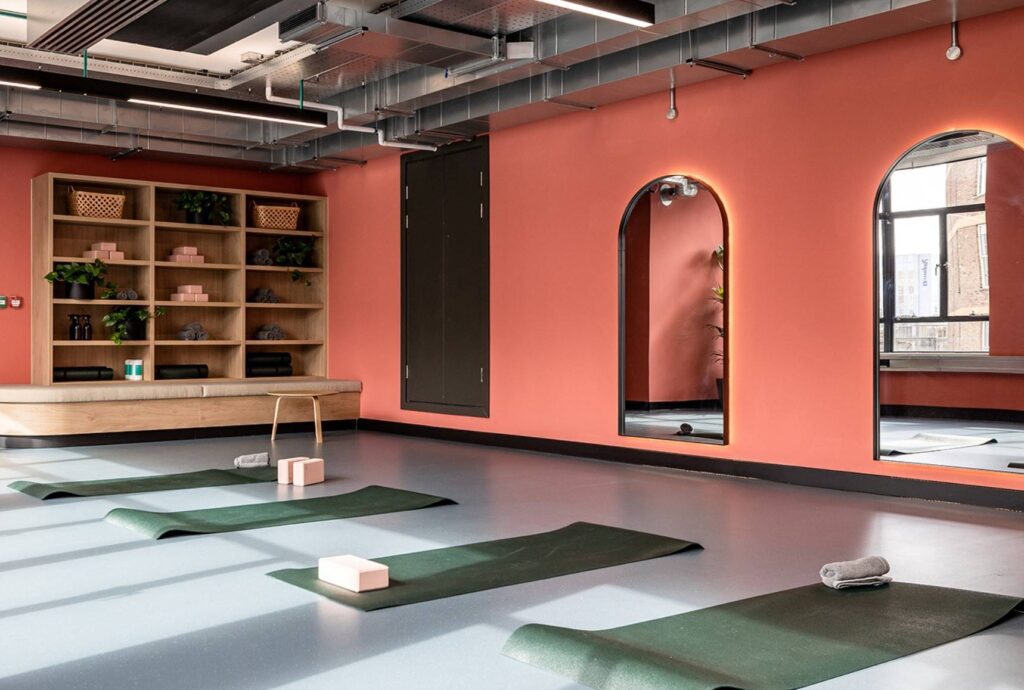
How can the workplace impact the happiness or wellbeing of its employees?
The wellbeing of a business’ employees can be improved by a variety of factors in the workplace:
Office design elements
Whether passive or active, the design of the space in which a company works has a huge impact on wellbeing. Some examples include:
- Biophilic Design. This includes plants, natural light, views to nature, natural materials and water features, all of which help to improve mental wellbeing and reduce anxiety.
- Filtered air
- Adequate heating
- Good natural light. This helps to improve circadian rhythms, sleep patterns, Vitamin D intake, and focus… what’s not to like?
- Ergonomic design. Primarily, ergonomic furniture aims to improve productivity, which we know is closely linked with wellbeing. Furthermore, the reductions in muscoskeletal pain which ergonomic design provides leads to reduced absenteeism. Find out more here.
- Clean and hygienic spaces
- Exercise facilities
- Showers. Aside from the refreshing adrenaline rush of a cold shower, warm showers can naturally relax your thoughts and muscles, and reduce symptoms of depression and anxiety. Learn more about active travel here.
- Bike storage
- Walking or standing meetings. Time spent sitting at a computer is correlated with more severe mental health issues, so any excuse to get your body moving and away from your desk is crucial for improved wellbeing.
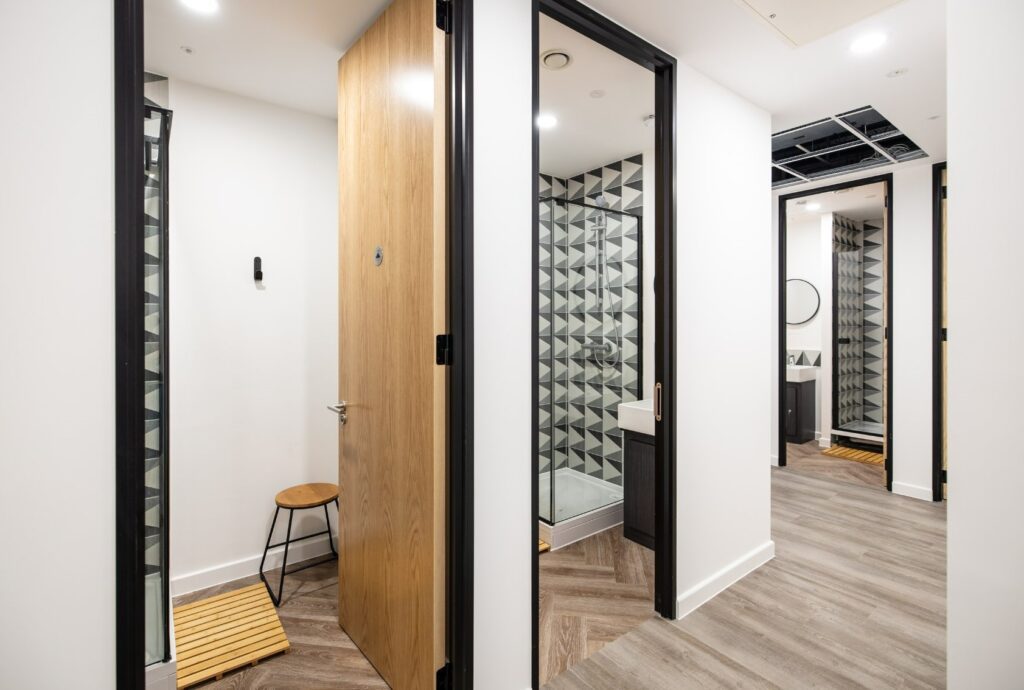
Office culture
In recent times, we are seeing progressive employers shift towards an agile working approach. Agile working recognises that work is a process rather than time spent at a specific desk. This style of work uses technology to mobilise workers, who can move freely around their workplace depending on the needs of their tasks – be that a need for an informal, creative space or a buzzy collaborative hub.
Complete breaks from work also need to be encouraged. The World Green Building Council’s 2014 report Health, Wellbeing and Productivity in the Offices, underlined the importance of time out. It revealed that workers who take regular breaks – that’s 10 minutes for every 90 worked – resulted in 30% more focus, 46% more overall wellbeing and 50% more creativity.
Having a culture that is trustworthy also enhances employee wellbeing. Many companies such as LinkedIn, Netflix and Virgin trust their employees to have unlimited holiday. This open and honest policy is a clear indication of promoting wellbeing by giving staff the freedom of choice.
Workplace values and principles
Setting clear expectations, encouraging open communication and supporting work-life balance are all ways in which employee wellbeing can be maintained. When employees feel left out, undervalued or confused, their wellbeing takes a hit. By making sure that employees know what is acceptable and feel confident enough to speak up and look after their mental health, their overall wellbeing will improve. Personal autonomy is another huge influence on an individual’s social wellbeing.
Workplace management
Employees may feel more equal, valued and trusted if a flatter management structure is in place, since it can remove the mental and physical barriers of a hierarchy.
The implementation of flexible working arrangements will also reduce stress and improve work-life balance. Examples include telecommuting and flexible hours.
Staff development and support
Training, mentoring and counselling is vital for employees’ mental health; giving them control over their personal welfare and improving their ability to thrive in their role. There should always be a system in place whereby an individual can access support with ease and without being made to feel embarrassed.
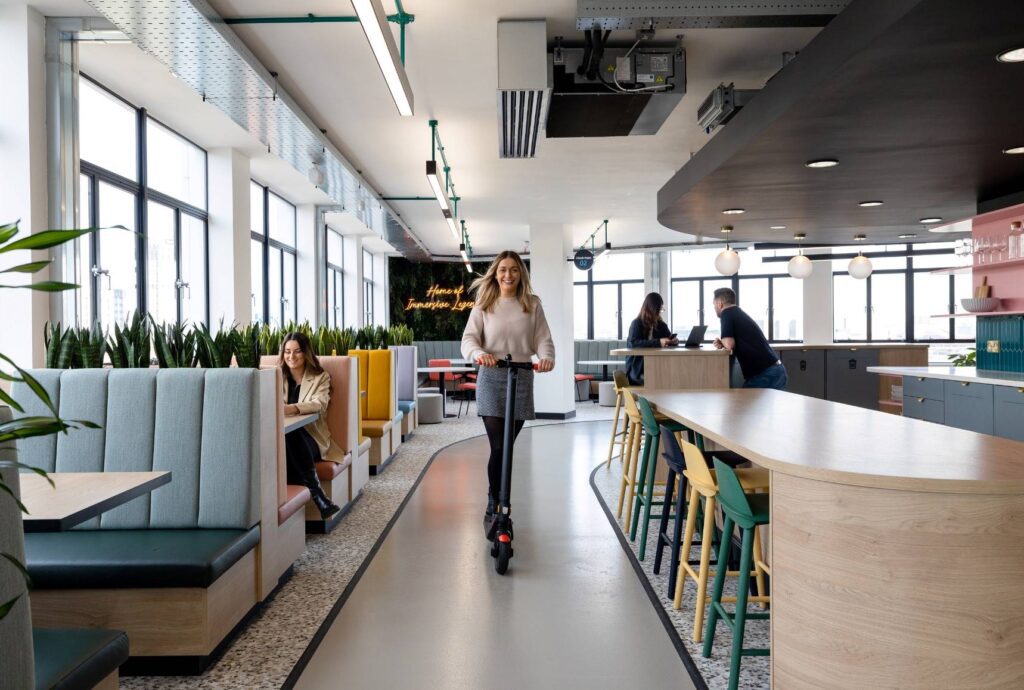
Who is responsible for workplace wellbeing?
Here at Interaction, wellbeing is central to the office design and build process. This is because we believe that the workplace is the biggest influencing factor in wellbeing amongst staff.This responsibility typically falls on the landlord, the employer, and the main decision makers within the company to ensure policies and resources are in place. Without a substantial amount of design features in an office specifically included to support wellbeing, it is increasingly difficult to achieve a truly satisfied workforce.
Whilst the organisation takes most of the responsibility for this, employees are also responsible for taking care of their own wellbeing and participating in programs that support their own mental and physical health.
How do you measure wellbeing in the workplace?
There is a plethora of ways in which wellbeing can be monitored, which, when combined, can paint a clear picture of overall wellbeing:
- Surveys or polls about employee’s satisfaction and improvement suggestions
- Performance metrics such as absenteeism, turnover and productivity
- Observations of behaviour and interactions (such as engagement, collaboration and communication)
- Health screenings to assess the physical health of employees
Creating a workplace wellbeing strategy
A workplace wellbeing strategy should be a top priority for every manager/decision maker of a business. As we know, wellbeing lies at the core of many important variables, such as productivity, engagement, employee retention and culture.
Once an organisation has identified the key factors which influence wellbeing, it is wise to conduct a survey amongst staff. The results from this survey should give insight into the current wellbeing and needs of the employees, which can be used to drive a plan. The aims of this plan should be sure to include initiatives targeted towards improving weaknesses in the employee survey.
The key to this strategy working effectively is monitoring and adjusting the plan based on performance; as some things improve, they will be making way for new initiatives to come into play.
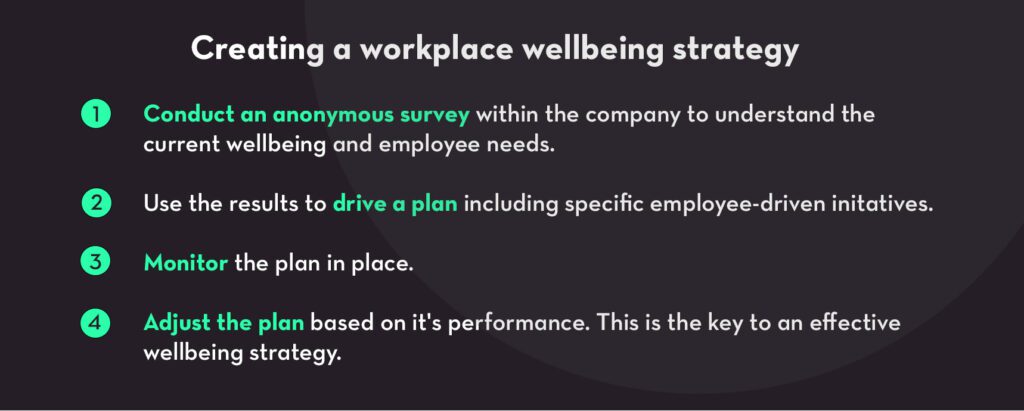
Get in touch on 01225 485 600 to start the process of improving the wellbeing in your workplace. Or, perhaps you might want to read more in the Workplace Culture Guide?
Join the Interaction community
Sign up for our newsletter to stay up-to-date with the latest insights
on the modern workplace and commercial property trends.


